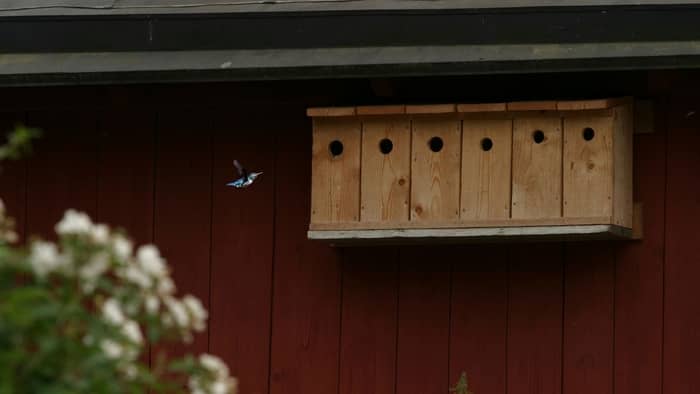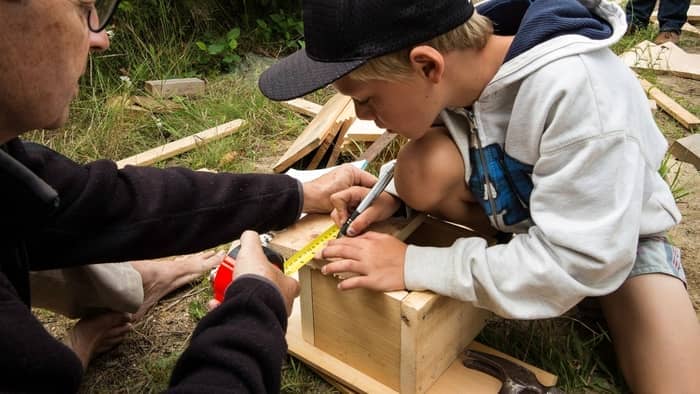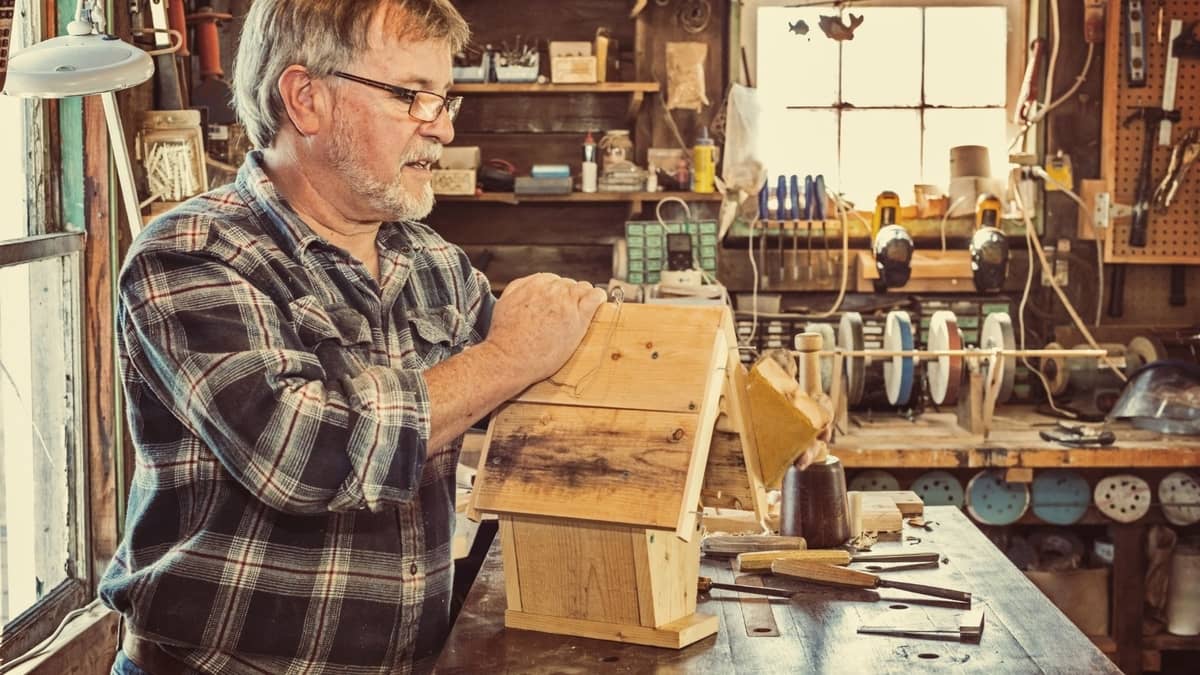Conventional closed birdhouses won’t draw in hummingbirds, so we’ll teach you how to build a hummingbird birdhouse that looks and feels secure. Hummingrids are unique in various ways, and their housing priorities are one of them. You’ve probably noticed how they won’t even stop near the birdhouses in your yard, even if they’re empty.
Hummingbirds migrate to your area right before they start nesting. Then they start looking for the perfect spot to build their open nest from scratch. They won’t stay at a conventional closed birdhouse even if you position it near their feeder.
If you want to help the hummingbirds out, we have a great tutorial on preparing a suitable hummingbird house.
Where Do Hummingbirds Lay Eggs?
Hummingrids lay their eggs in self-made nests. They pick secluded locations away from predators. The female hummingbird is responsible for the whole process. She picks various materials like spider silk, leaves, moss, twigs, down, and fur.
The hummingbird’s eggs are no more than 0.5-0.6 inches long and 0.3 inches wide. The female typically lays 2 eggs at once, so the nest is usually around 1.5 inches wide. Beware that hummingbirds can have two to three broods per year, but they always build a new nest. There are cases when a hummingbird lays eggs in a second nest, while the young ones still haven’t left the first one.

When Do Hummingbirds Start Building Their Nest
It’s interesting to know that female hummingbirds start building their nest before mating. Hummingbirds can lay their eggs as early as April or May, depending on the area. The winter residents lay eggs as late as December. The nest-building process takes them a week, and the nesting lasts for 2 weeks.
Hummingbird Nesting Material
The nesting material hummingbirds use is soft, gentle, and flexible. They’re small and unable to carry a heavy load like branches to build a giant nest. Instead, their goal is for the nest to blend in with the surrounding. This way, hummingbirds protect themselves and their eggs from predators.
Dandelion down, tiny twigs, spider silk, dried leaves, and tree resin are common nesting materials.
Can You Build A Hummingbird Nest
It’s hard to replicate the same nest a hummingbird would build, but we can try and make an imitation. It’s crucial to remember to make it open, soft and not to decorate it much.
Build A Hummingbird House

A tutorial on how to build a hummingbird birdhouse is way more different. You will need a minimal amount of materials but will have to get in the yard and gather some of them. Equip yourself with patience as we’re making miniature models.
Materials
- Old newspaper or soft paper
- Paper Mache glue
- Spider webbing
- Dandelion down
- Moss
- Leaves
- Twigs
Tools
- Scissors
- 1/2 inch paintbrush
- Small balloon
- Pin
- Shallow bowl
- Drinking plastic cup
Instructions: How To Build A Hummingbird Birdhouse
Step 1
Start by cutting the newspaper into 1-inch wide and 6-inch long strips. This project won’t work with glossy magazine paper. Instead, dive into your garage for an old-school black and white paper.
Then inflate the balloon to 4 inches in diameter.
Step 2
Place the ballon on the tied side over a plastic cup. Fill the bowl with paper mache paste. Dip your newspaper strips into the paste several at a time. Take each strip and place it over the ballon, aiming to form a basket-like shape. Add more than one layer to the base.
Next, take the paintbrush and dip it into the paper mache glue. Finish by applying a layer of glue over the paper.
Step 3
Let the nest air dry for at least 12 hours. Then take the pin and pop the ballon. Gently lift and peel it from the paper base. Now it’s time to fill the nest.
Remember not to overfill the nest. Instead, put a tiny amount of spider silk, dandelion down, and moss. You can place the rest of the materials near the nest so the hummingbird can pick and choose what to add.
Tips On Building A Birdhouse
This tutorial on building a hummingbird house might remind you of decoupage. But don’t use mod podge or other artificial glue. It’s best to make your own paper mache glue, also known as a wheat paste.
Mix water and flour in a 1:1 ratio until there are no lumps. Add a little more water if the texture is too thick and unspreadable. Heat it for a minute in the microwave and there you have your organic glue.
You Build A Hummingbird Birdhouse – But How To Draw In The Birds
There’s not much you can do to encourage hummingbirds to use the birdhouse you made. It’s more important to draw them to your garden. Place feeders near the tree where you plan on placing the nest. Plant more hummingbird-friendly plants that are rich in nectar. But more importantly, check to see if any threats can repel hummingbirds from your garden.
Read more about Cleaning Hummingbird Feeder With Bleach

Hanging Hummingbird Nest
Hummingbirds build their nest at an elevation of 5 to 90 feet over tall tree branches. So your best bet is to place the nest on some of the forks of the tree. To keep it in place, use some of the homemade glue and cover the base with leaves. Try not to visit the nest often, as hummingbirds appreciate their privacy. Also, they won’t nest where there’s a lot of traffic.
You can pierce two holes in the sides and tie the nest with jute to a taller branch. Pick a tree with a wide crown that feels more sheltered.
Final Say: Why You Need To Build A Hummingbird Birdhouse
Hummingbirds nest once to three times a year and always build a new nest. They can return to a place they’ve nested before if they found it secluded, safe, and abundant with food.
To welcome them in your yard, provide enough food, like feeders, insects, and nectar-rich flowers. Then, build a few nests and position them up in the crowns of your most bushy trees. Make sure to have the nests ready by the middle of spring. Conventional birdhouses are not appealing to hummingbirds. They prefer soft, flexible, open nests hidden away from predators and close to food sources.

